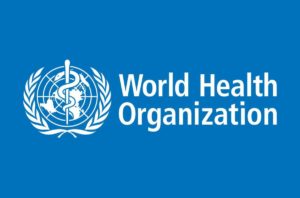Updates on COVID-19
The State of California and the County of San Diego Public Health Office is frequently issuing orders that require action from individuals and organizations to prevent the disease from spreading in our region. These actions may include certain closures and social distancing requirements. Click on each image below for the latest updates.
Q&A with the WHO
WHO’s Q&A on breastfeeding and COVID-19 also provides additional infection prevention advice to mothers with confirmed or suspected COVID-19.
FREQUENTLY ASKED QUESTIONS (FAQs)
General Information on COVID-19
How does a Coronavirus spread and how can people protect themselves against it?
Among people, the virus typically spreads through coughing and sneezing, personal contact with an infected person, or touching an infected surface and then the mouth, nose or eyes. To protect against infection, the Centers for Disease Control and Prevention (CDC) recommends following basic hygiene practices, like frequent hand washing, staying hydrated, coughing into one’s arm or a tissue, and staying home if you feel ill.
What are the symptoms of the new Coronavirus?
Coronaviruses can cause a range of symptoms, including fever, cough, shortness of breath, a sore throat and a runny nose. Most Coronavirus infections merely cause a common cold; the more severe strains can lead to severe pneumonia requiring hospitalization. The CDC notes that symptoms of the novel Coronavirus include “fever and symptoms of lower respiratory illness (e.g., cough, difficulty breathing).” Risk factors include and recent travel to certain affected areas or contact with someone who is suspected of having the virus.
What signs should cause people to seek medical attention?
If you have traveled internationally within the past two weeks and develop a fever or cough or have trouble breathing, seek medical attention immediately. If you recently traveled internationally, call the doctor or emergency room in advance to explain your symptoms and let them know where you recently traveled. Follow those guidelines for your child as well. If your child shows any Coronavirus symptoms, please call ahead before visiting an Emergency Department.
Steps to Protect Yourself and Others:
https://www.cdc.gov/coronavirus/2019-ncov/prepare/prevention.html
¿Cómo se propaga el coronavirus y cómo las personas se pueden proteger en contra del virus?
Normalmente el virus se propaga de persona a persona tosiendo y estornudando, con el contacto físico con una persona infectada o al tocar una superficie infectada y luego tocarse la boca, la nariz o los ojos. Para protegerse del contagio, los Centros para el Control y la Prevención de Enfermedades (CDC) recomiendan que se siga una higiene básica, por ejemplo, lavarse las manos con frecuencia, estar hidratado, taparse la boca con el brazo o un pañuelo al toser, y quedarse en casa si le parece que está enfermo.
¿Cuáles son los síntomas del nuevo coronavirus?
Los coronavirus pueden provocar distintos síntomas, entre los cuales destacan la fiebre, la tos, la dificultad para respirar, el dolor de garganta y el goteo nasal. La mayoría de las infecciones por coronavirus simplemente provocan un resfriado común; las cepas más fuertes pueden llevar a una neumonía que puede precisar hospitalización. Los CDC apuntan que los síntomas del nuevo coronavirus incluyen “fiebre y síntomas de una enfermedad de las vías respiratorias bajas (por ejemplo, tos y problemas para respirar)”. Entre los factores de riesgo se incluyen si se ha viajado hace poco a ciertas zonas afectadas o se ha tenido contacto con alguien del que se sospeche que esté infectado por el virus.
¿Qué señales deberían hacer que alguien solicite atención médica?
Si usted ha estado en otro país en las últimas dos semanas y empieza a tener fiebre, tos o le cuesta respirar, busque atención médica de inmediato. Si viajó a otro país hace poco, llame al médico o a la sala de emergencias de antemano para explicar los síntomas que tiene y comunicar dónde viajó hace poco. Siga estas pautas también para su niño. Si su niño tiene alguno de los síntomas del coronavirus, por favor, llame con antelación antes de acudir al Departamento de Emergencias.
Como tomar medidas para protegerse:
https://www.cdc.gov/coronavirus/2019-ncov/prepare/prevention-sp.html




